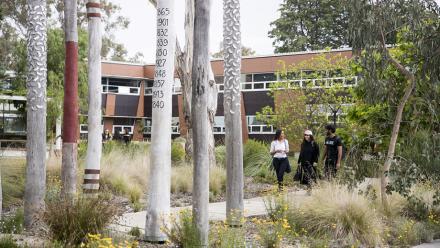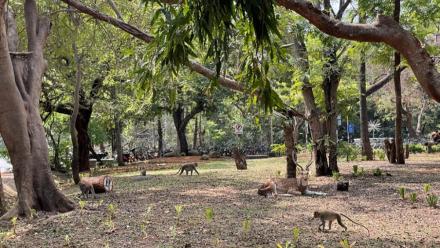ANU research creates satellite maps for emergency help
First responders would be furnished with almost-instant satellite maps of the natural disasters they are tackling thanks to a new algorithm that Australian National University (ANU) researcher Associate Professor Dale Roberts is preparing as part of the University's Climate, Energy and Disaster Solutions Institute.
Associate Professor Roberts has developed artificial intelligence (AI) algorithms that train a computer to recognise specific elements of a satellite image and produce maps in record time.
For natural disasters like bushfires and floods, this means that emergency workers can access satellite maps within an hour. More traditional raw satellite images are not maps. Such images display every piece of information about the surface of the Earth at a particular point in time. Satellite maps, on the other hand, provide select, thematic information from an image.
In the past, the work needed to translate satellite imagery into purposeful thematic maps has largely been done by hand, often leading to long delays.
Associate Professor Robert's algorithms are being used as part of the Australian Government's response to certain recommendations of the Royal Commission into National Natural Disaster Arrangements.
The work comes off the back of almost a decade of applied mathematical research that Associate Professor Roberts has used to develop custom algorithms and apply these to satellite imagery. His algorithms have been used to map and monitor water across Australia; to map coastal erosion; bushfire scars, vegetation, and urban sprawl, among other themes.
While providing information to first responders in one application, the research has many other potential applications. Associate Professor Roberts' novel, high-dimensional statistical techniques eliminate imagery distractions such as clouds, and vegetation. In the latter case, this allows soil researchers and mineral explorers to see what's happening at the soil and mineral level without vegetation obscuring their view. His work on this topic was published in Nature in 2019.
Other applications could extend to mapping trees, investigating carbon capture measures and answering other environmental questions that help the world to triage and plan for future climate impact.
In producing his innovative and impactful work, Associate Professor Roberts works closely with ANU Enterprise which supports him in working with industry and government clients.
To connect with more researchers at ANU, contact kathryn.vukovljak@anu.edu.au.


